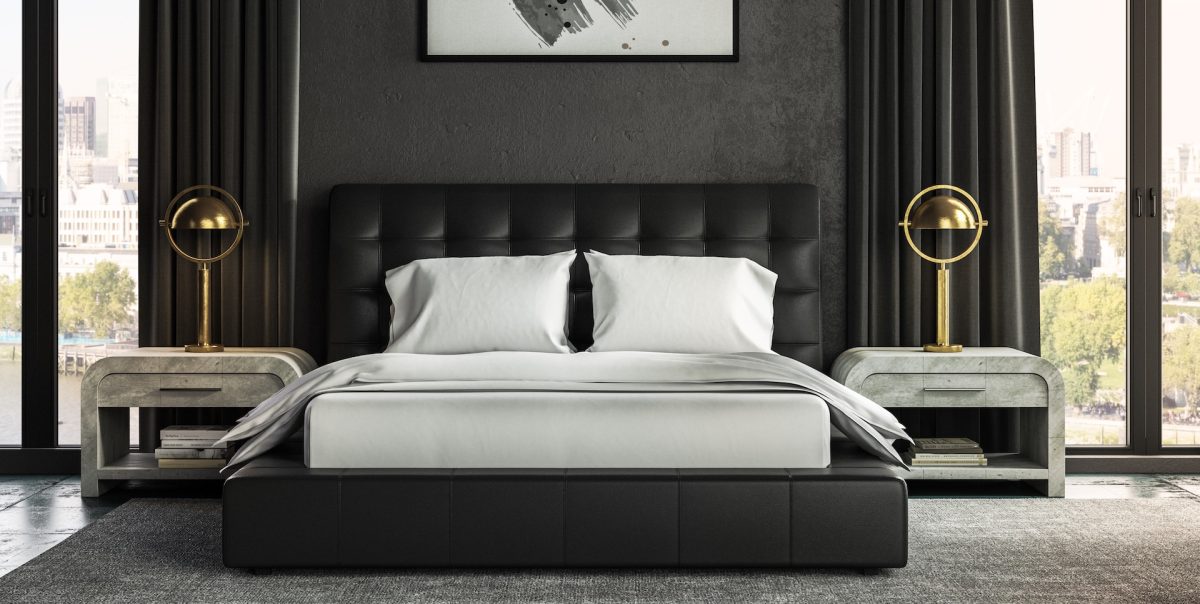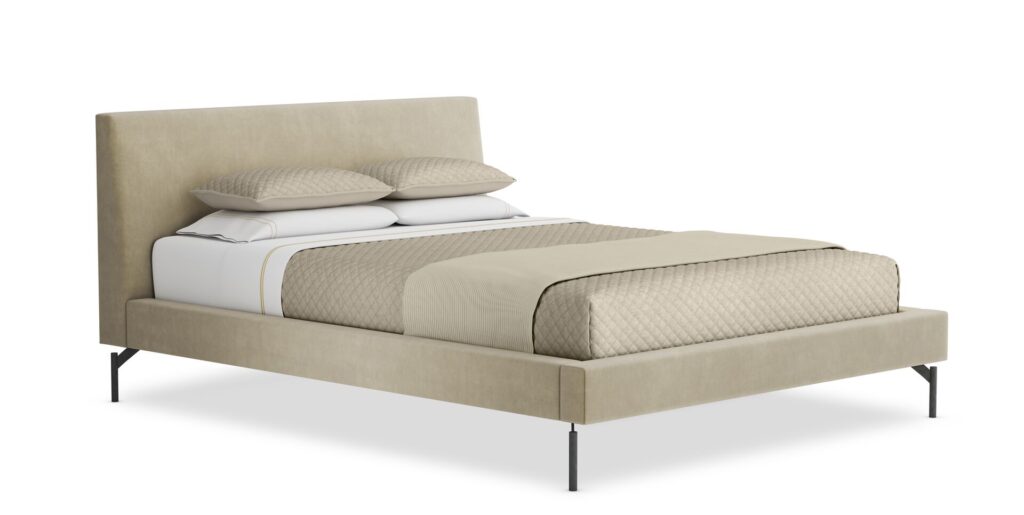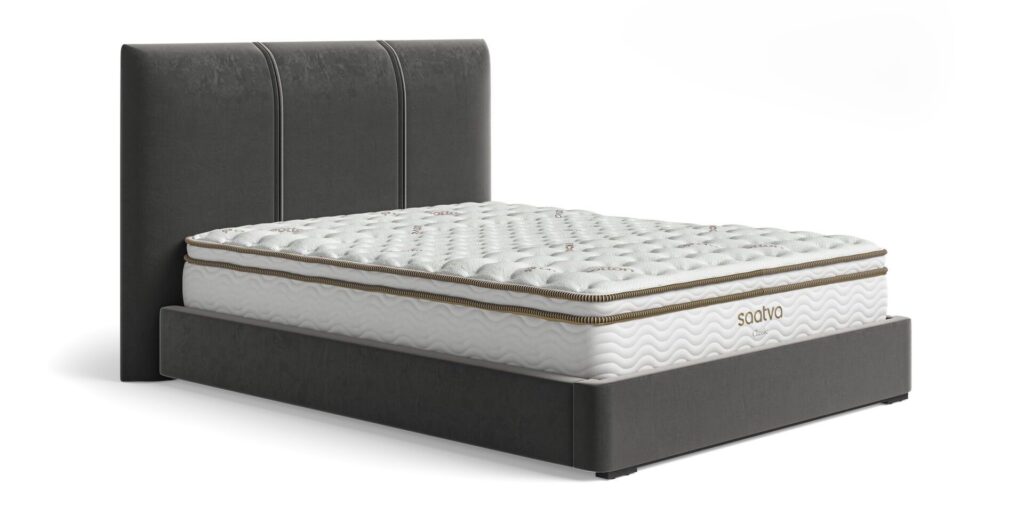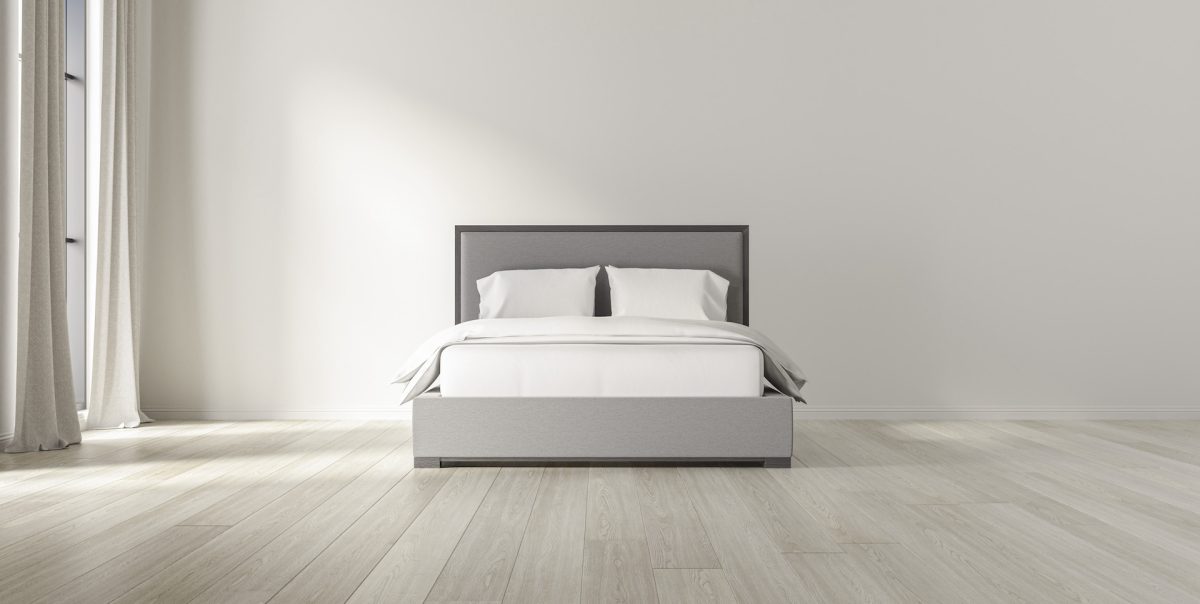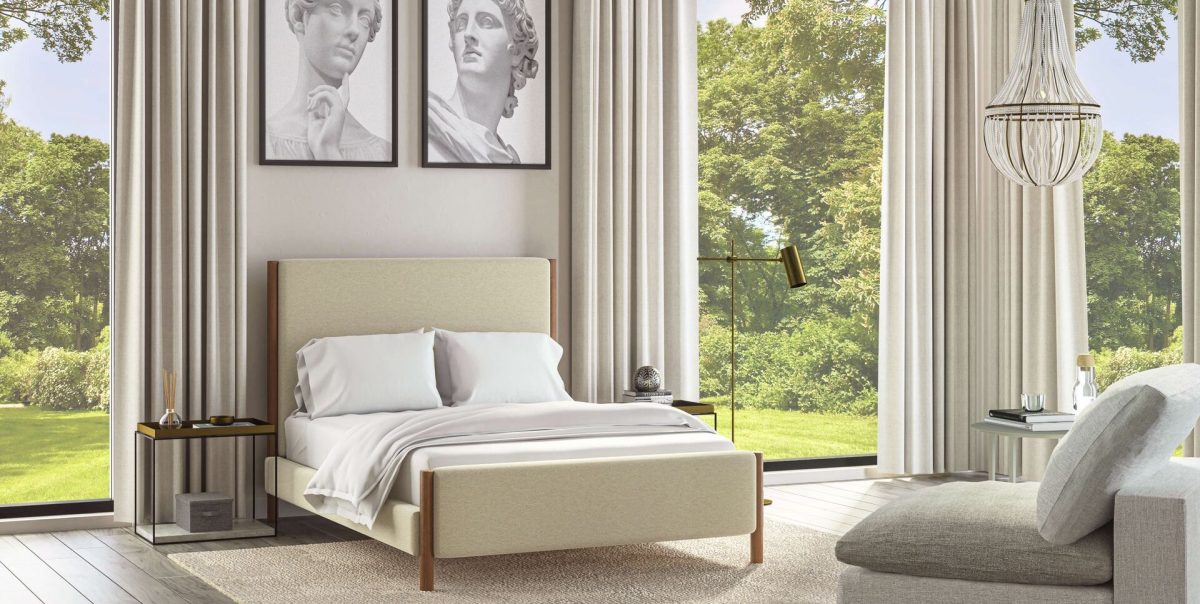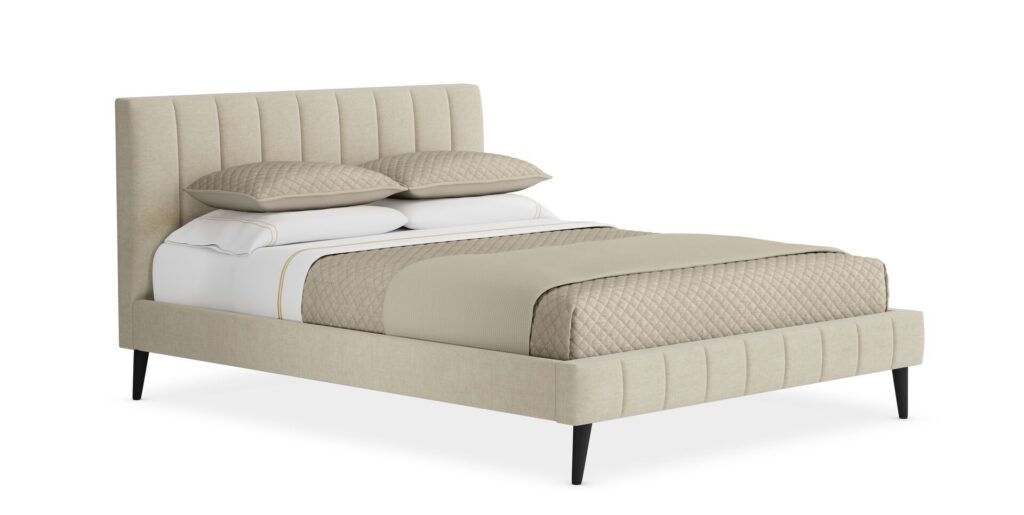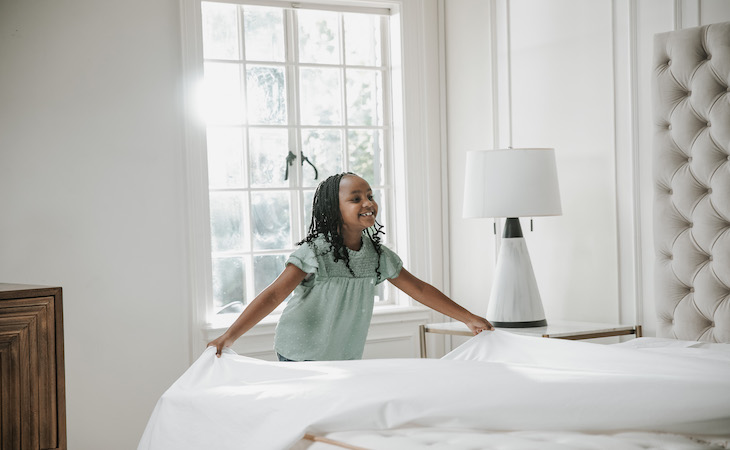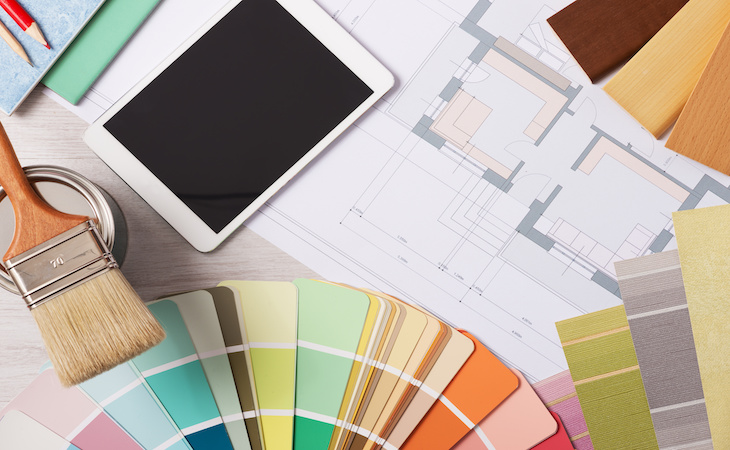
Bedroom Furniture, Bedroom Style
April 22, 2025
What Is a Headboard—and Do You Need One?
Written by Shelby Deering
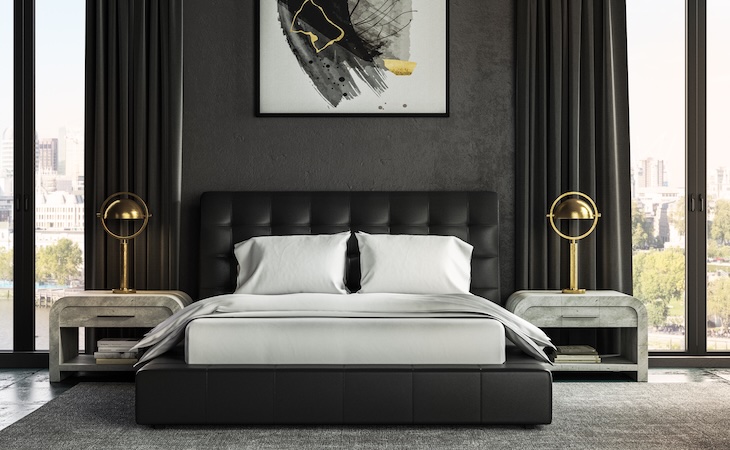
In today’s very nearly “anything goes” world of interior design, longstanding design rules are no longer required—instead, people make the personal, aesthetic choices that suit themselves.
This currently includes the fact that you don’t necessarily need a headboard on a bed anymore. In fact, headboard-less beds frequently pop up on social media.
But although a headboard has now become optional, it can offer a nice touch of design, provide additional support, and prevent your wall from being damaged.
“A solid headboard really completes the space and anchors the bed to the wall,” says Anthony Michael, principle of Anthony Michael Interiors. “There is usually a void above just a plain mattress, and the headboard really helps to fill that void and offers an opportunity to bring in another surface to complement the room’s furnishings.”
You might be wondering: What is the purpose of a headboard? You also might be thinking about how to choose a headboard. Ahead, we’ll explore everything you need to know about headboards and how to find the best one for you.
What is a headboard?
So, what is a headboard—and what is a headboard for?
It’s essentially a piece of furniture that attaches to the head of a bed, right above where you place your pillows and rest your head to go to sleep. Although it’s mainly known to be decorative, it also serves functional purposes.
A headboard is a piece of furniture that attaches to the head of a bed, right above where you place your pillows and rest your head to go to sleep.
Types of headboards
There are several different materials that can make up headboards. They can be upholstered, wooden, or metal.
As Michael points out, they can even be iron, brass, laminate, stone, or porcelain. The styles also differ between headboards—they can be floor-standing, slatted, wall-mounted, or freestanding.
The benefits of headboards
Add a stylish element to a bedroom
In essence, a headboard can help to “finish” the look of a bed. As Michael puts it, headboards offer “a complete decorative look.”
Prevent wall damage
If you forgo a headboard, unfortunately, wall damage may not be far behind. The mattress can rub against the wall from repeated movement and cause scuff marks. The unprotected bed frame may bump against the wall.
Or pillows can rub the surface and take off spots of paint. Since a headboard serves as an anchor for the bed frame, this can help to protect the wall down the road, says Michael.
Give you extra support
Headboards act as a headrest/backrest for those times when you’re sitting in bed relaxing, Michael notes.
The drawbacks of headboards
Cost
Like any piece of furniture, a headboard can be expensive. They usually cost around $200, and they go upwards to $1,000 or more for more luxurious varieties. High-quality bed frames with built-in headboards can cost in the thousands.
Take up space
At times, headboards can “appear bulky,” says Michael. That means headboards not only take up visual space but physical space in and around your bed as well. These are things to consider if you have a particularly small bedroom.
Can appear dated
Nowadays, headboards run the risk of looking “dated,” especially since the more modern way to go is to dismiss the headboard altogether, says Michael.
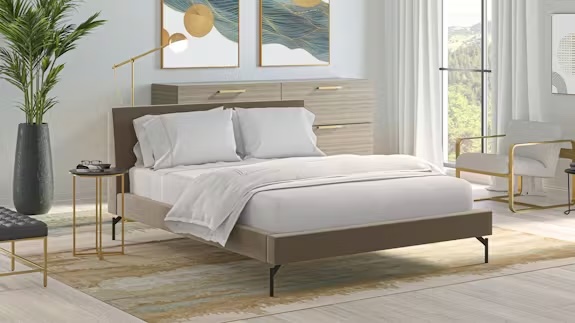
Headboard vs. bed frame: What’s the difference?
A headboard on its down differs from a bed frame with a built-in headboard. But is one better than the other? And why would you choose a bed frame that has a built-in headboard?
“There really is no comparison—the bed frame supports the mattress and is utilitarian, while the headboard is optional,” Michael says. “I prefer both the frame and the headboard as it not only completes the look but is functional.”
These are things you can keep in mind if you’re wondering how to choose a bed headboard.
How to choose the best headboard for you
Perhaps you’re thinking through how to go about picking a headboard with all of the options available out there. You might specifically be considering how to choose a headboard color or how to choose an upholstered headboard.
Unsurprisingly, you should look to the rest of your bedroom—its size, style, and color palette—to inform your decision. You should start by finding a headboard that fits your exact mattress size and fits the visuals of the room as well.
For instance, if you have a bedroom that’s on the minimalist side, you’ll want to avoid headboards that are overly ornate or bulky. Proportion and scale play an important role when deciding upon what type and how big a headboard should be, notes Michael.
As a designer, Michael says he looks for “the decorative aspect first” since the functionality speaks for itself. “I also look at the bed size and proportion to the space,” he adds. “For example, I generally specify headboards with height for added comfort and drama.”
Then there are some features you can look for in the headboard itself. If storage is a priority, some headboards have cubbies or shelves. Some have built-in lights for late night reading.
Also, there are features that are purely design-related, like the type of fabric that’s used, tufting, and patterns. Headboards can come in certain shapes and styles too.
Overall, it really depends on your unique tastes and your space’s needs as you navigate choosing a headboard.
How to install a headboard
If you’re planning to buy a headboard that’s separate from a bed frame, how should you go about installing it?
“Since all mattress sets require a bed frame, one would need to fasten the headboard to the frame or wall with simple screws, or if it’s wall mounted, a French cleat [a mounting system geared toward heavy objects] to the wall,” Michael explains.
Tools that can come in handy during a headboard installation include a power drill, screwdriver, a level, and a stud finder if needed.
How to care for a headboard
One downside of an upholstered headboard is the stains that inevitably transfer from oils and haircare products, making them a bit more difficult to maintain.
For this, you’ll need to check the care label before proceeding. Generally, though, you can use a mild soap or fabric-specific upholstery cleaner to remove the stains. A vacuum cleaner and lint roller can do away with dust that gathers at the top of the headboard.
This is why Michael prefers headboards with more cleanable surfaces. “With iron or brass, a cleaner such as Brasso is recommended; with porcelain or marble, a good sealer would prevent any staining; and with wood, a simple furniture polish will suffice,” he says.
FAQs
Can a bed just have a headboard?
Yes! You don’t necessarily need an entire frame to support a headboard. In this case, you would purchase a headboard that’s freestanding or wall-mounted.
What does headboard mean?
Headboards have been around for centuries, going all the way back to the ancient Egyptians. The word literally denotes a board that’s near one’s head.
What’s the difference between a headboard and a bed frame?
While a bed frame is a type of frame for a bed that includes a footboard, side rails, and its own headboard, a headboard can be its own separate entity, a decorative panel that’s found at the back of the bed and doesn’t need to attach to a frame.
Find the best bed frame with headboard for you at Saatva
Saatva offers a wide range of bed frames with built-in headboards to choose from depending on your style. For example, there’s the Adra, rendered in leather with platform visuals and a tufted appearance for the headboard.
The Amalfi Storage Bed, meanwhile, has a tall, very grand, headboard and also serves the practical purpose of providing storage in your bedroom. For something classic, stylish, and on the minimal side, look no further than the Copenhagen.
Shelby Deering
Shelby Deering is a Madison, Wisconsin-based freelance lifestyle writer contributing home design and health articles to national publications. When she’s not writing, you’ll find her hiking, running, or walking with her husband and corgi, Dolly.
